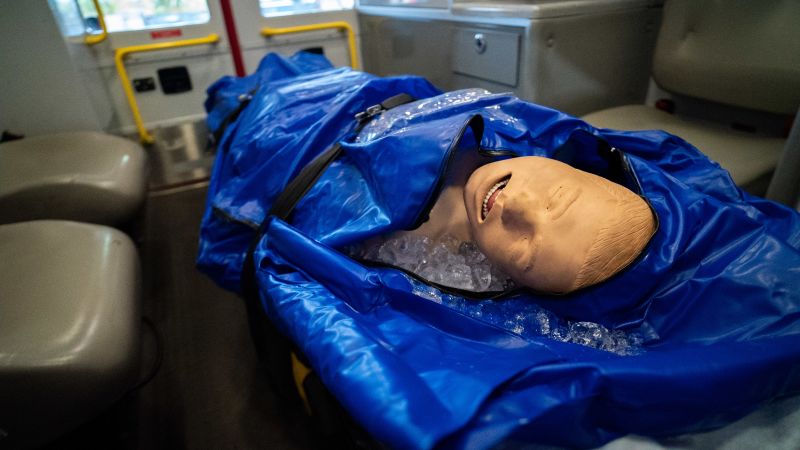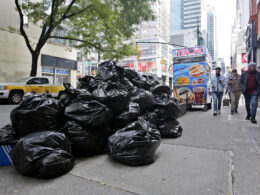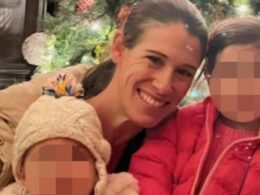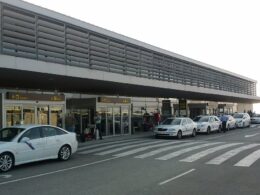CNN
—
On some parts of an overheating Earth, the old complaint that “it’s not the heat, it’s the humidity” gets truer by the year.
But in the hottest big city in the US, where sunbaked concrete sprawls across bone-dry desert, Phoenix is setting records in both high temperatures and body count — and learning the hard way that it’s not just the heat, it’s the vulnerability.
Simply living in the Phoenix area has turned deadly as fossil fuel pollution pushes temperatures to dangerous highs. Temperatures are 5 to 6 degrees hotter in Phoenix now than the already-scorching norm, and heat deaths in Maricopa County have more than quadrupled in the last seven years, leaping from 154 in 2016 to last year’s grim milestone of 645.
Coroners have confirmed close to 40 heat deaths so far this year and have placed more than 400 more under investigation before the end of July, sparking fears this year could be even deadlier.
Phoenix has become a real-time experiment in adaptation as first responders, health care workers and city planners scramble to keep their city survivable.
“Buy the bigger ice machines,” Phoenix Fire Captain Robert McDade tells emergency managers who call for advice from around the world. “Be willing to change what you’ve done.”

McDade is helping to rewrite the playbook on how to save people from death by heat.
Some things are still the same, including who is most vulnerable: Contrary to the belief that kids are the most adaptable among us, the young are particularly at-risk, as are the elderly. McDade recalled a 10-year-old who recently died from heat on a hike, and he has too many examples of members of our most senior generation falling victim in homes without cooling.
“We have a lot of our folks that do landscaping and construction,” he said. “They’re working outside. We need to get to them.”
“And then, of course, we have our unhoused.”
What’s new is the urgency with which McDade and other officials are treating heat illness — an urgency that matches the devastation heat inflicts on the body.
Every minute spent with a body temperature over 104 degrees “is cooking the brain, and the organs are starting to shut down,” McDade explained.
For generations, heat stroke victims weren’t iced down until they got the hospital. Not anymore. Every ambulance and firetruck in the city’s fleet is now stocked with body bags full of ice. When someone falls victim to heat stroke, first responders immerse them up in the icy bags to start the cooldown immediately — a strategy that’s proved successful in sports and the military.
“Our goal is to get them down to below 102.4 degrees before we get to the hospital, or within 30 minutes,” Phoenix Fire Captain John Prato said.

More common than not, the people suffering heat illness are the unhoused. Many also struggle with addiction.
After her parents suffered one too many blizzards in Chicago, Phoenix Mayor Kate Gallego grew up in the desert heat of Albuquerque and studied environmental science at Harvard. After taking office in 2019, she learned quickly how common urban problems like substance abuse, lack of affordable housing and outdated infrastructure become even more dangerous when the mercury holds above 115 degrees.
“About 65% of the people we’ve lost recently had an addiction,” Gallego told CNN. “We lost way too many people who were under the influence of methamphetamines and didn’t go inside or didn’t cool down when they needed to.”
Gallego created the nation’s first Office of Heat Response and Mitigation in 2021 and in April, Phoenix City Council voted 7-0 to pass some of the first worker protection laws anywhere. “We look at everything from providing shaded work environments to water breaks to how construction hours can be shifted,” Gallego said.
With overnight temperatures staying so high — sometimes hotter than 90 degrees in the dead of night — data showed most people were seeking emergency relief just as the city’s cooling facilities were closing. “That was one of our big lessons from last summer. We had only one location that was open throughout the night, and now we’ve been adding locations. Every summer we learn, and we improve.”

Arizona Governor Katie Hobbs went a step farther in March with an executive order that spurred the conversion of 18 shipping containers into mobile, solar-powered cooling centers.
“These are welcoming locations,” said Eugene Livar, Arizona’s first Chief Heat Officer as he led a “cooltainer” tour. “These are for anybody who just needs a little bit of a break, but there’s also an opportunity to connect with people like the unhoused with substance abuse problems. What information and resources can we have ready when they arrive?”
Others are working on altering the environment itself to reflect solar radiation back into space and keep the solid surroundings — pavement, buildings, sidewalks — from getting so hot they can cause third-degree burns.
“We chose to live in the desert,” Jennifer Vanos said while pulling a wagon full of scientific instruments down a scorching Phoenix street. “It’s hot no matter what. But how can we create microclimates that are cooler than the surrounding environment?”


As an Associate Professor at Arizona State’s School of Sustainability, Vanos and her team use tools that include a sweating mannequin to measure the heat radiating through different neighborhoods with varying force.
Reflective white roofs are standard on most commercial buildings, over 120 miles of “cool pavement” has been created with a sealer that reflects enough sunlight to lower surface temperatures by up to 8 degrees, and a “Canopies for Kids” program prioritizes tree planting around schools and playgrounds.
“When I was first elected, we pushed buildings to not to get too close to the public sidewalk areas,” Gallego said. “And now we want to encourage it. We have a goal for 70% of our heavily walked areas to have shade cover, because it can make a huge difference in how comfortable you are outside.”
A 2021 Arizona State study titled “50 Grades of Shade,” found leafy, nonnative trees over gravel and tightly arranged “urban canyons” and breezeways provide the most relief, but these take time to grow and build.
In the meantime, those on the front lines focus on saving lives, one body bag full of ice at a time.









